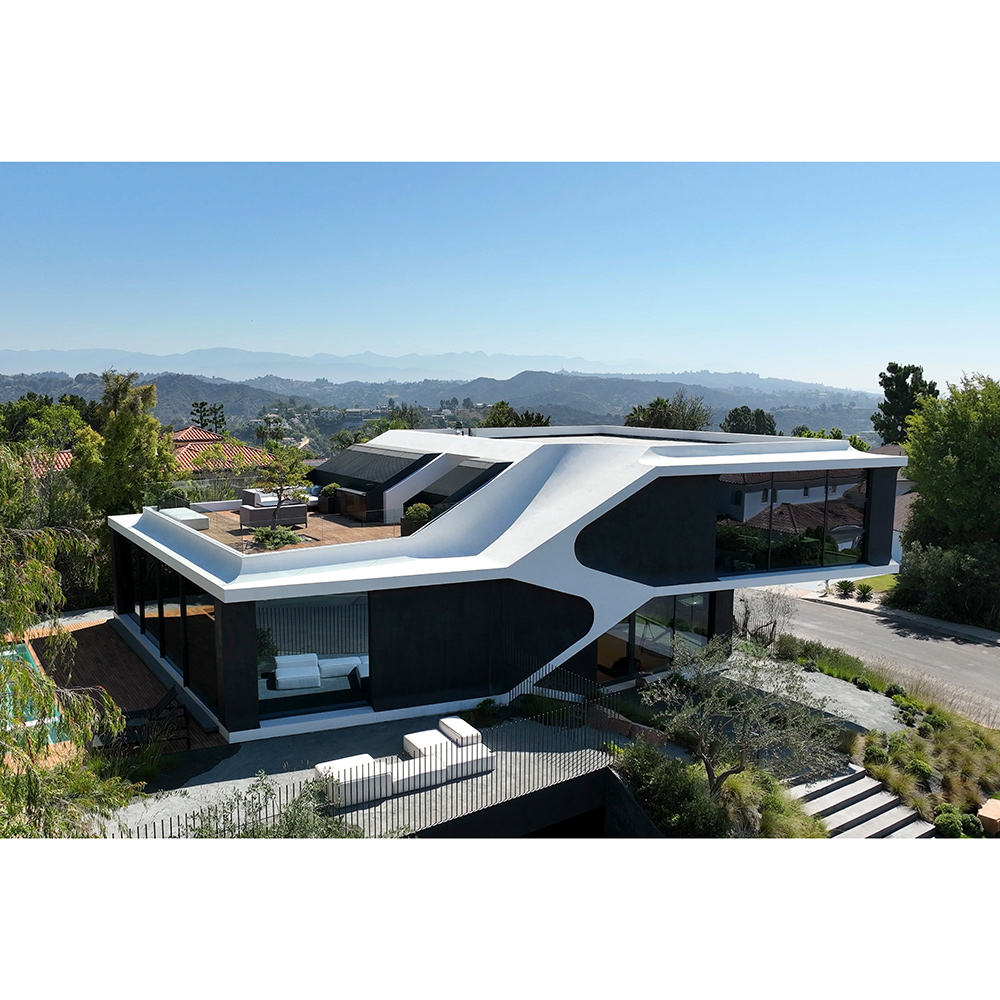Gold Winner of the International Architecture & Design Awards 2023
Architect / Designer:
Arshia Mahmoodi
Studio:
Arshia Architects
Design Team:
Architect / Designer: Arshia Mahmoodi / Xinlei Li / Yuheng Huang / Fang Cui / Ruby Wu / Zhishan Liu
General Contractor: Domaen Build Inc
Structural Engineer: BOLD Engineer & Associates Inc.
MEP Engineer: GMEP Engineers
Civil Engineer: GreyStone Engineering Group Inc.
Soils Engineer: Hillside Inspections, Inc.
Copyright:
Paul Vu / Renee Parkhurst / Yuheng Huang
Country:
United States
Perched on a hilltop in the Bel Air neighborhood of Los Angeles, overlooking the Pacific Ocean and the Los Angeles basin, the project gently lands a dynamic building on top of a buried podium that replicates the natural topography that was once there before the area was subdivided for development. This hollow post-war neighborhood has been transforming gradually, overtaken by recent developments that rely on size rather than spatial quality. The concept set out to reduce the massing of a rather large project, for it to lodge within the neighborhood proportionally. It proposes an alternative model within the confines of stringent regulations.
This project engages an exercise in spatial relationships to accelerate the programs of the house. It utilizes the split-level design to follow this topography of the hill and to connect the floor half-story plates. The plates form adjacencies, both visual and functional therefore allowing twice the utility of an otherwise dissected organization.
The design set out to minimize the physical and psychological distances between different compartments in a residential assemblage. The objective was to decrease the amount of time it takes to access other spaces in the program. To achieve this, a two-fold approach was undertaken.
The design was first approached on a horizontal plane removing as many walls and vertical barriers as possible. The resulting condition was spaces that related to each other, but were not partitioned, except for areas that required deliberate privacy. This meant direct visual connection from one space to most other spaces in the house, which shortened the time of accessing information in other parts of the house, therefore reducing perceptual distances.
Secondly the design approached the problem physically, looking at the structure in the vertical plane. The floor plates of the house were shifted vertically peripheral to a central void and connected by fibrous ligaments, creating half planes. Access to other stories in the house became one-half the distance of a traditional full story structure. Once again, by reducing time, distances were reduced and made for a compact design.
The project was inspired by streamline automotive design, which proposed concealed performance for every technology in the house. The interior concept was based on a utilitarian approach to materials and palettes, in contrast to the overall ambient approach of the design, where space overcame necessity. This balance of power proceeded in the backdrop of environmental sensitivity and clinical dearth.
A courtyard created by daylighting the lower bedrooms from the buried podium, also acts as the rainwater runoff filtration system for the entire site. The project meets or exceeds stringent California green building and energy conservation standards such as low-flow plumbing systems, drought tolerant planting, rainwater filtration, photovoltaic integration, high efficiency building envelope and glazing, HERS rating of the mechanical system and more.
Arshia Architects
Founded in 2006, Arshia Architects emerged from the tectonic breach of the aesthetic experience and the act of building – purposely fusing this gap with novel substance.
We are a collective of designers dedicated to optimizing experiences between sentient and non-sentient domains, whose aim is to decipher our relationship with the world and its components at large and the implications our built environment has on its trajectory into the future. Our practice has been recognized recurrently by national and international citations such as the American Institute of Architects and featured in prestigious venues.



